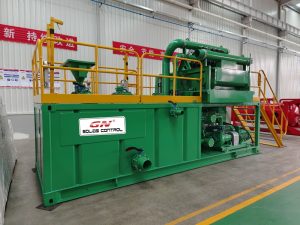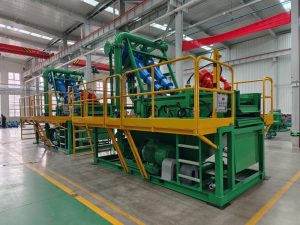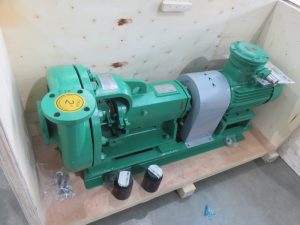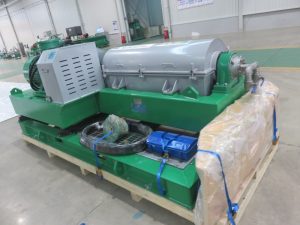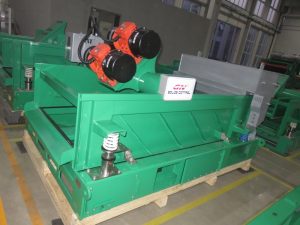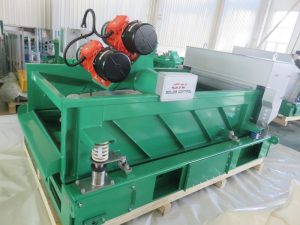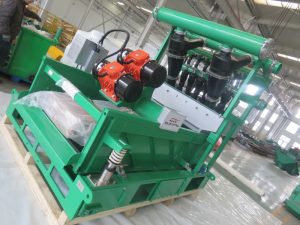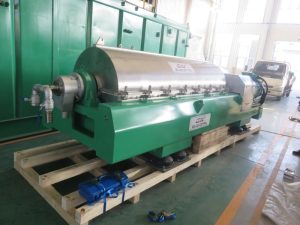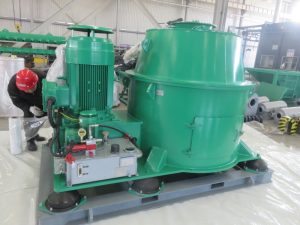The application of drilling fluid desander, desilter, and shaker in the Indonesian market has gained significant attention due to their high efficiency and cost-effectiveness. This article will explore the principles of their application and analyze their market performance in Indonesia.
1 Principles of Application
The principles of application of drilling fluid desander, desilter, and shaker are essential to understand in order to maximize the efficiency and effectiveness of these equipment in the drilling process. Each of these components plays a crucial role in the solids control system, and their proper application is key to ensure the quality of the drilling fluid and the successful completion of the drilling operation. In this section, we will delve into the fundamental principles of applying drilling fluid desander, desilter, and vibrating screen, highlighting their respective functions and the synergistic effects of their combined application.
The drilling fluid desander is designed to remove solid particles with sizes ranging from 45 to 74 microns. Its principle of application lies in the use of centrifugal force to separate the solid particles from the drilling fluid. As the drilling fluid enters the desander, it is directed into a cylindrical chamber where the centrifugal force causes the solid particles to move towards the outer wall of the chamber. The solid particles are then directed downwards and discharged through the underflow outlet, while the clean drilling fluid is collected from the overflow outlet at the top of the desander. This process effectively removes the larger solid particles from the drilling fluid, preventing the abrasion of the drilling equipment and maintaining the desired properties of the drilling fluid.
On the other hand, the drilling fluid desilter focuses on removing smaller solid particles with sizes ranging from 15 to 44 microns. Similar to the desander, the desilter utilizes centrifugal force to achieve solid-liquid separation. The drilling fluid enters the desilter and is directed into the hydrocyclone, where the rotational motion creates centrifugal force, pushing the solid particles to the outer wall of the hydrocyclone. The separated solid particles are then discharged through the underflow outlet, while the clean drilling fluid is collected from the overflow outlet. By removing the finer solid particles, the desilter complements the desander’s function and further improves the quality of the drilling fluid.
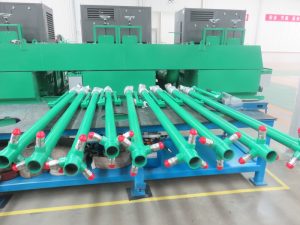
In addition to the desander and desilter, the vibrating shake , also known as the shale shaker, plays a critical role in the solids control system. Its principle of application involves the use of vibratory motion to separate solid particles from the drilling fluid. The drilling fluid is directed onto the vibrating screen, where the vibratory motion causes the solid particles to be separated from the fluid. The separated solid particles are then discharged, while the clean drilling fluid passes through the screen and is collected for further processing. The vibrating screen effectively removes larger solid particles and agglomerates that may have bypassed the desander and desilter, ensuring the drilling fluid’s cleanliness and stability.
Furthermore, the combined application of the desander, desilter, and vibrating screen results in synergistic effects that significantly enhance the solids control efficiency. By sequentially passing the drilling fluid through the desander, desilter, and vibrating screen, the system can effectively remove solid particles of various sizes, ensuring that the drilling fluid meets the required specifications. This integrated approach maximizes the removal of solid particles, minimizes the loss of drilling fluid, and ultimately improves the overall performance of the drilling operation.
In conclusion, the principles of application of drilling fluid desander, desilter, and vibrating screen are based on the fundamental concepts of centrifugal force and vibratory motion for solid-liquid separation. Understanding the functions and applications of these components is crucial for achieving an efficient and effective solids control system. Their combined application ensures the removal of solid particles of different sizes, leading to clean and stable drilling fluid, thus contributing to the success of the drilling operation.
2 Market Performance in Indonesia
The market performance of drilling fluid desander, desilter, and vibrating screen in Indonesia is characterized by several key factors that influence their adoption rate, cost-effectiveness, and impact on drilling operations. In this chapter, we will delve into these aspects to provide a comprehensive analysis of their market performance in the Southeast Asian country.
First and foremost, the adoption rate of drilling fluid desander, desilter, and vibrating screen in Indonesia is influenced by the country’s increasing focus on efficient and sustainable drilling practices. As Indonesia continues to expand its oil and gas exploration and production activities, the demand for advanced drilling equipment and technologies has grown significantly. This has led to a higher adoption rate of equipment such as drilling fluid desanders, desilters, and vibrating screens, as these play a crucial role in enhancing drilling efficiency and minimizing environmental impact. The increasing awareness of the benefits of these equipment has contributed to their widespread adoption across various drilling operations in Indonesia.
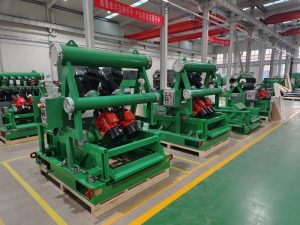
Moreover, the cost-effectiveness of these equipment in the Indonesian market is a critical factor that determines their performance. The cost-effectiveness is not only evaluated based on the initial investment but also on the long-term operational efficiency and maintenance requirements. The drilling fluid desander, desilter, and vibrating screen have demonstrated their cost-effectiveness by improving drilling fluid quality, reducing downtime, and lowering overall operational costs. The ability of these equipment to effectively remove sand, silt, and other solid particles from the drilling fluid has resulted in improved drilling performance and reduced wear and tear on drilling equipment. As a result, the cost-effectiveness of these equipment has been a key driver in their market performance in Indonesia.
Furthermore, the impact of drilling fluid desander, desilter, and vibrating screen on drilling operations in Indonesia is substantial. These equipment have significantly enhanced the overall drilling process by ensuring the quality of the drilling fluid, which in turn has led to improved wellbore stability, reduced formation damage, and increased drilling efficiency. The use of vibrating screens has also played a crucial role in separating solid particles from the drilling fluid, thereby preventing blockages in the drilling equipment and promoting smoother drilling operations. The positive impact of these equipment on drilling operations has been a major factor in their widespread adoption and market performance in Indonesia.
In conclusion, the market performance of drilling fluid desander, desilter, and vibrating screen in Indonesia is characterized by their increasing adoption rate, cost-effectiveness, and substantial impact on drilling operations. These factors have contributed to the significant presence of these equipment in the Indonesian drilling industry and have positioned them as essential components for efficient and sustainable drilling practices in the country.
3 Comparative Analysis with Alternative Solutions
In the Indonesian market, the application of drilling fluid desander, desilter, and vibrating screen faces competition from alternative solutions such as manual sand removal, traditional drilling fluid cleaning methods, and other types of solid control equipment. This section will compare the application of drilling fluid desander, desilter, and vibrating screen with these alternative solutions, evaluating their advantages and limitations.
Firstly, let’s consider the manual sand removal method. In this traditional approach, workers manually remove the sand and solid particles from the drilling fluid using simple tools such as shovels and buckets. While this method may seem cost-effective at first glance, it presents several significant limitations. The manual removal process is labor-intensive, time-consuming, and prone to human error. Moreover, it does not provide a thorough and efficient solution for removing fine solid particles from the drilling fluid, which can lead to equipment wear and tear, increased maintenance costs, and potential damage to downstream equipment. Therefore, when compared to the manual sand removal method, the drilling fluid desander, desilter, and vibrating screen offer a more efficient and effective solution for solid control in drilling operations.
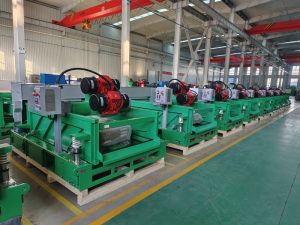
Secondly, traditional drilling fluid cleaning methods, such as settling tanks and shale shakers, have been commonly used in the industry. However, these methods also have their limitations. Settling tanks require a large footprint and a significant amount of time to separate solid particles from the drilling fluid, making them less suitable for operations where space and time are limited. On the other hand, shale shakers are effective in removing larger solid particles but are less efficient in handling fine particles. In contrast, the drilling fluid desander, desilter, and vibrating screen are specifically designed to handle a wide range of particle sizes, providing a more comprehensive and efficient solution for solid control in drilling operations.
Furthermore, other types of solid control equipment, such as centrifuges and hydrocyclones, are also used as alternative solutions in the market. While these technologies are effective in certain applications, they often come with higher capital and operating costs. Centrifuges, for example, require a significant amount of energy to operate and maintain, resulting in increased operational expenses. Hydrocyclones, on the other hand, may require frequent maintenance and replacement of parts, adding to the overall cost of operation. In comparison, the drilling fluid desander, desilter, and vibrating screen offer a more cost-effective solution with lower energy consumption and maintenance requirements, making them a preferred choice for many drilling operations in the Indonesian market.
In conclusion, the comparative analysis reveals that the application of drilling fluid desander, desilter, and vibrating screen offers significant advantages over alternative solutions in the Indonesian market. The efficiency, versatility, and cost-effectiveness of these technologies make them a preferred choice for solid control in drilling operations, ensuring optimal performance and cost savings for operators.
In conclusion, the application of drilling fluid desander, desilter, and vibrating screen in Indonesia presents immense potential for the drilling industry. Their effectiveness in removing sand, silt, and impurities from drilling fluid, coupled with their cost-effectiveness, makes them indispensable tools for drilling operations in the region.
